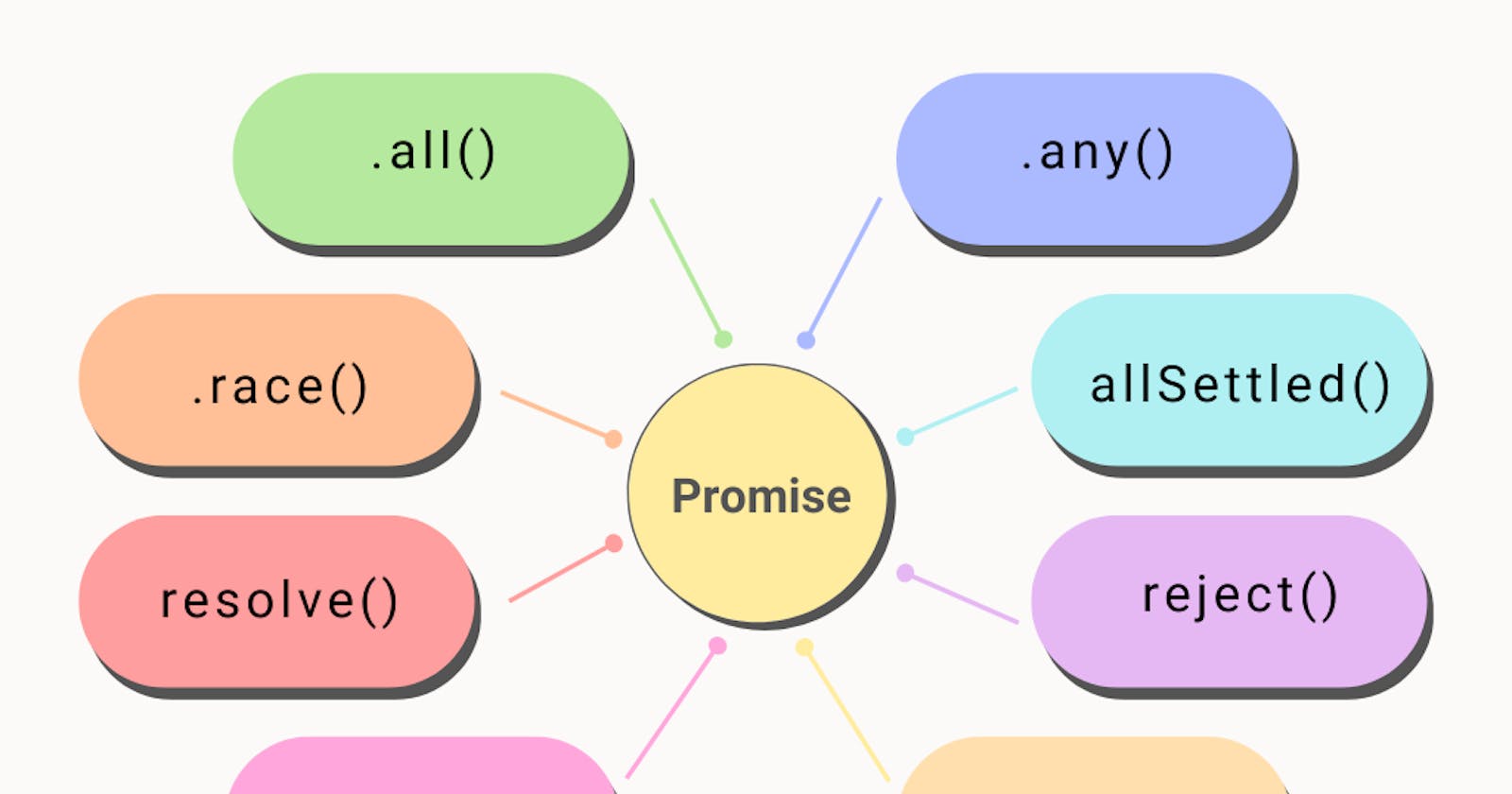Javascript Promise Methods with polyfill example: A Cheat Sheet for Developer
Promise helps to do something asynchronously, It is a way to handle asynchronous operations in JavaScript.
Promise consists of three states:
- Pending: Initial State, neither fulfilled nor rejected.
- Fulfilled: Completed Promise (success)
- Rejected: Failed Promise (failure)
Without wasting time, Let's learn about the Promise functions.
Note: I've also added a Polyfill example, Which will help you to understand easily and also help you if you are preparing for the interview.
1. Promise.all
Promise.all takes an array of promises as input and returns a promise object. The returned promise will be resolved when all the promises in the input array are resolved. If any of the promises in the input array is rejected, the returned promise will be rejected with the reason for the first rejected promise.
Example:
const promises = [1, 2, 3].map((item) => Promise.resolve(item));
Promise.all(promises).then(console.log); // [1, 2, 3]
Polyfill Example:
const all = (promises) => {
return new Promise((resolve, reject) => {
const result = [];
let count = 0;
for (let i = 0; i < promises.length; i++) {
Promise.resolve(promises[i]).then((res) => {
result[i] = res;
count++;
if (count === promises.length) {
resolve(result);
}
}, reject);
}
});
};
2. Promise.race
It takes an array of promises as input and returns a promise object. The returned promise will be resolved/rejected as soon as one of the promises in the input array is resolved/rejected.
Example:
const promises = [Promise.resolve(1), Promise.reject(2), Promise.resolve(3)];
Promise.race(promises).then(console.log); // 1
Polyfill Example:
const race = (promises) => {
return new Promise((resolve, reject) => {
promises.forEach((promise) =>
Promise.resolve(promise).then(resolve, reject)
);
});
};
const promises = [Promise.resolve(1), Promise.reject(2), Promise.resolve(3)];
race(promises).then(console.log); // 1
3. Promise.allSettled
It takes an array of promises as input and returns a promise object. The returned promise will be resolved when all the promises in the input array are settled. The returned promise will be resolved with an array of objects that each describes the outcome of each promise in the input array.
Example:
const promises = [Promise.resolve(1), Promise.reject(2), Promise.resolve(3)];
Promise.allSettled(promises).then(console.log); // [{status: "fulfilled", value: 1}, {status: "rejected", reason: 2}, {status: "fulfilled", value: 3}]
Polyfill Example:
const allSettled = (promises) => {
return new Promise((resolve) => {
const result = [];
let count = 0;
const handleResult = (value, index, status) => {
result[index] = { status, value };
count++;
if (count === promises.length) {
resolve(result);
}
};
for (let i = 0; i < promises.length; i++) {
Promise.resolve(promises[i]).then(
(res) => handleResult(res, i, "fulfilled"),
(err) => handleResult(err, i, "rejected")
);
}
});
};
const promises = [Promise.resolve(1), Promise.reject(2), Promise.resolve(3)];
allSettled(promises).then(console.log); // [{status: "fulfilled", value: 1}, {status: "rejected", reason: 2}, {status: "fulfilled", value: 3}]
4. Promise.any
It takes an array of promises as input and returns a promise object. The returned promise will be resolved when any of the promises in the input array is resolved. If all of the promises in the input array are rejected, the returned promise will be rejected with an error array.
Example:
const promises = [Promise.reject(1), Promise.reject(2), Promise.resolve(3)];
Promise.any(promises).then(console.log); // 3
Polyfill Example:
const any = (promises) => {
return new Promise((resolve, reject) => {
const result = [];
let count = 0;
const handleResult = (value, index, status) => {
result[index] = { status, value };
count++;
if (count === promises.length) reject(result);
};
for (let i = 0; i < promises.length; i++) {
promises[i].then(resolve, (err) => handleResult(err, i, "rejected"));
}
});
};
const promises = [Promise.reject(1), Promise.reject(2), Promise.resolve(3)];
any(promises).then(console.log); // 3
5. Promise.resolve
It returns a resolved promise.
Example:
Promise.resolve(1).then(console.log); // 1
Polyfill Example:
const resolve = (value) => {
return new Promise((resolve) => resolve(value));
};
resolve(1).then(console.log); // 1
6. Promise.reject
It returns a rejected promise.
Example:
Promise.reject(1).catch((err) => console.log(err)); // 1
Polyfill Example:
const reject = (value) => new Promise((resolve, reject) => reject(value));
reject(1).catch((err) => console.log(err)); // 1
Thank you for reading 😊
Got any questions or additional? please leave a comment.
More content at hashnode.
Catch me on
Github, Twitter, LinkedIn, Medium, Dev.to, Blogspot, Stackblitz.

